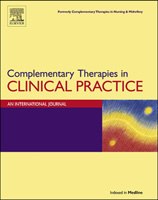cemoi.com.br
NIH Public Access Author Manuscript Oral Dis . Author manuscript; available in PMC 2008 February 28. Oral Dis . 2007 November ; 13(6): 508–512. Oral biofilms, periodontitis, and pulmonary infections S Paju 1,2 and FA Scannapieco 3 1Institute of Dentistry, University of Helsinki, Helsinki, Finland 2Department of Oral and MaxillofacialDiseases, Helsinki University Central Hospital,

 Complementary Therapies in Clinical Practice
Pilates for low back pain: A systematic review
Paul Posadzki ,, Pawel Lizis , Magdalena Hagner-Derengowska
a Complementary Medicine, Peninsula Medical School, 25 Victoria Park Road, Exeter, Devon EX2 4NT, UKb Institute of Physiotherapy, Saint Cross Physiotherapy College, Kielce, Polandc Rehabilitation Clinic, Department of Health Sciences, Collegium Medicum, Nicolas Copernicus University, Bydgoszcz, Poland
Objective: The aim of this paper is to systematically review all controlled clinical trials of Pilates to treat
Data sources: A systematic review of nine databases (Cochrane Central Register of Controlled Trials,
MEDLINE, EMBASE, CINAHL, AMED, PsycINFO, Pedro, Rehadat, Rehab Trials) was conducted and the
reference lists of all the papers were checked for further relevant publications until May 2010.
Complementary Therapies in Clinical Practice
Pilates for low back pain: A systematic review
Paul Posadzki ,, Pawel Lizis , Magdalena Hagner-Derengowska
a Complementary Medicine, Peninsula Medical School, 25 Victoria Park Road, Exeter, Devon EX2 4NT, UKb Institute of Physiotherapy, Saint Cross Physiotherapy College, Kielce, Polandc Rehabilitation Clinic, Department of Health Sciences, Collegium Medicum, Nicolas Copernicus University, Bydgoszcz, Poland
Objective: The aim of this paper is to systematically review all controlled clinical trials of Pilates to treat
Data sources: A systematic review of nine databases (Cochrane Central Register of Controlled Trials,
MEDLINE, EMBASE, CINAHL, AMED, PsycINFO, Pedro, Rehadat, Rehab Trials) was conducted and the
reference lists of all the papers were checked for further relevant publications until May 2010.